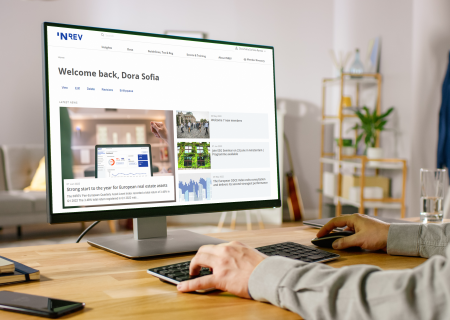Digitisation and tokenisation technologies could ease vehicle access
Opening new doors in real estate
For all the advances in the marketplace over recent years, investment into private commercial real estate – both vehicles and individual assets – is still a cumbersome process. Real estate transactions involve a number of different stages and multiple intermediaries, such as lawyers and agents, who help reduce risk for all participants but add time and cost.
Up to now, the most obvious solution to this problem has been to invest in listed real estate, with its low transaction costs, small minimum ticket sizes and high liquidity. But the listed market doesn’t always work well for many market players. For instance, listing portfolios can be expensive for asset owners, while investors often find that listed real estate’s financial performance mirrors equities more than direct real estate, at least in the short term, in turn limiting its diversification value.
So do investors just have to accept that accessing private real estate is always going to be complicated? Perhaps not for much longer. Digital technologies are now starting to help streamline the transaction lifecycle in ways that could prove revolutionary.
Listing portfolios can be expensive for asset owners, while investors often find that listed real estate’s financial performance mirrors equities more than direct real estate
For real estate vehicles in particular, one area where technological innovations are already starting to have an impact is at the very start of the transaction process, often called ‘onboarding’. Traditionally, investors have needed to complete a lot of paperwork at this stage, including Know-Your-Customer (KYC), Anti-Money Laundering (AML) and subscription documents. This is usually a manual process, often needing a number of intermediaries to complete.
Today, however, digital automation is starting to impact these processes via data integration, digital signatures and workflow software. Streamlining onboarding activities in this way is proving particularly popular among types of investors that have traditionally been smaller in scale, such as retail, high net worth and family office investors. These investors, who may lack the resources needed to absorb the costs of existing practices, may now be willing to consider investing in real estate for the first time or more extensively.
Yet the most exciting potential role for digital technology may be at the very heart of the transaction, via the advent of tokenisation – that is, representing assets or funds in a digital and divisible form. This could make real estate more accessible to a far wider spectrum of investors, at substantially lower cost.
The forecasted adoption of tokenisation is based on the use of blockchain technology. Most famously adopted by Bitcoin, blockchain technology has the advantage of allowing for the efficient and trustworthy recording of transactions between multiple parties. However, the ‘distributed ledger’ concept underlying this technology far predates the digital era, going back to the wooden ‘split tally’ stick used in medieval times to record transactions and balances. The advantage of blockchain lies in its speed, transparency and widespread accessibility.
Yet the most exciting potential role for digital technology may be at the very heart of the transaction
Tokenising assets in this way could bring greater transparency to the transaction process by giving all participants and service providers access to the same data. ‘Smart contracts’ will have digital instructions governing every token transaction, making them fully automated. Automated token processing will allow both whole and fractional amounts to be traded quickly and cost-effectively, making it easier for smaller investors to access the real estate market.
So how can investment managers put tokenisation into place? First, they need to find the most appropriate legal structures for a digital version of their product. In the short term the most popular route is via a special purpose vehicle, however, multiple regulatory authorities are developing and implementing legal structures and enablers to offer digitised products without this intermediary step. Then they can call on tokenisation platform providers to help them, by using the product’s terms and conditions to produce fully digitised ‘smart contracts’. Finally, the tokenised products can be distributed – not just via traditional channels but also via direct channels to smaller investors, including high net worth and retail investors, that such platforms typically offer. This should lead to a fully automated transaction process operating at a much greater speed, lower cost and for a wider client base than the status quo.
Tokenising assets in this way could bring greater transparency to the transaction process by giving all participants and service providers access to the same data
Admittedly, the huge potential benefits of blockchain-type technologies in transacting real estate funds could take some time to materialise, as there are a number of hurdles to overcome, particularly in the prevailing real estate culture and investment regulation. But combined with the digital innovations in client onboarding and reporting are already starting to bear fruit, these changes could ultimately amount to a digital revolution in the transaction lifecycle. In the meantime, organisations that adopt these technologies at an early stage should be able to steal a march on their competitors in the evolving digital ecosystem.
Download the full INREV paper ‘Digitisation and Tokenisation of Real Estate Investments’ for further insights or listen to the recording of the Technology Seminar on Digitalisation and Tokenisation.








